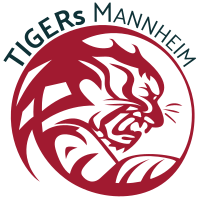Open Source Software and Hardware
Software framework
Electronics
They are designed with Autodesk EAGLE.
Mechanics
2011 files use CATIA.
2013 and 2014 files use Autodesk Inventor 2013.
2016, 2017, and 2018 files use Autodesk Inventor 2016.
2019 and 2020 files use Autodesk Inventor 2019.
Firmware
Each archive contains a PDF file with setup instructions.
TIGERs grSim Simulator
Autonomous Referee
SSL Augmented Reality App
Documentation and other files
(Seminar) Papers
This section lists papers written by Tigers team members during their studies or with a strong relation to the RoboCup domain.
| Published | Title | Author | |
|---|---|---|---|
| Jun 15, 2011 | A Simulation for the RoboCup Small-Size-League | Leinemann, Gero | Abstract Paper |
The Small-Size-League of the international RoboCup-competition is – besides the simulation league - the fastest throughout the contest. Thus the algorithms for the playing-behavior are more complex and diversified then these in the other leagues. |
|||
| May 01, 2011 | Prädiktion von Roboter- und Ball-Positionen in der RoboCup Small-Size-League - Theoretische Grundlagen verwendeter Verfahren und Modellierung von Objektbewegungen | Birkenkampf, P. et al | Abstract Paper |
In der Small Size League des RoboCup [31] treten Roboter internationaler Teams in der Disziplin Fußball gegeneinander an. Die Roboter agieren dabei nicht vollständig autonom, sondern werden vom jeweiligen Teamserver aus durch eine künstliche Intelligenz gesteuert. Die Positionen der Roboter auf dem Spielfeld werden von globalüber dem Feld montierten Kameras erfasst und durch die standardisierte Software SSL-Vision [36], verarbeitet. Als Ergebnis werden Positionsdaten der Roboter und Bälle auf dem Spielfeld sowie die Ausrichtung der Roboterüber ein kabelgebundenes Netzwerk an die Teamserverübermittelt. Das Reglement der Small Size League ist in [28] beschrieben. Da die Kameras real sind, sind die Messungen der Daten verrauscht. Dieses wird durch die Bilderkennungsalgorithmen von SSL-Vision nicht kompensiert. Des Weiteren entsteht eine Verz ögerung von der Aussendung eines Bewegungsbefehls an einen Roboter bis zur Registrierung dessen Umsetzung anhand der veränderten Positionsdaten - ausgewertet durch SSL-Vision - beim Teamserver. Bei den Eingangsdaten des Teamservers handelt es sich demzufolge um veraltete Informationen. Das Small Size League Team Skuba zeigt in [29], dass sich ein Roboter in dieser Latenzzeit bis zu 47cm bewegen kann. Die Positionsdaten von SSL-Vision können aus diesen Gründen nicht direkt zur Spielfeldanalyse und zur Ansteuerung der Roboter verwendet werden. Um innerhalb eines Spiels auf Situationen schnell und korrekt zu reagieren, ben ötigt das System die aktuelle Spielsituation mit minimalem Rauschen. Da nur Positionsdaten der Vergangenheit existieren, muss der aktuelle Status auf Basis dieser Informationen ermittelt werden. Ziel der Arbeit ist es, die theoretischen Grundlagen eines Softwaremoduls für den Teamserver des RoboCup Teams Tigers Mannheim zu erläutern, das aus den eingehenden Daten eine zukünftige Spielsituation prädiziert. Hierfür wird zunächst das Extended Kalman Filter als Verfahren zur Rauschreduktion und Prädiktion vorgestellt. Im Anschluss erfolgt eine Einführung in das Partikelfilter als alternativen L ösungsansatz. Daran anknüpfend werden die Bewegungsmodelle sowohl für Bälle als auch für Roboter vorgestellt, welche in den vorher beschriebenen Verfahren zum Einsatz kommen. |
|||
| Dec 23, 2010 | Design of the Electronics for a Small Size League Robot | Ryll, Andre | Abstract Paper |
Joining the RoboCup Small Size League has become very difficult as new teams need to build their own robot, including the electronics, from scratch. To overcome this issue, this paper covers the problem of creating highly complex electronics for controlling a four-wheeled SSL compliant bot. |
|||
| Dec 23, 2010 | Cooperative shoot and pass behaviour of mobile robots in the context of the TIGERS-Mannheim SSL Robocup-project | Berthold, G., Waigand, D. | Abstract Paper |
The student project Tigers Mannheim aims at enabling a team of autonomous robots, controlled by a central artificial intelligence, to play soccer. For this intent, a coordinated shooting and passing is essential and has therefor been designed and implemented. Here, the real-time environment and the adaption to the proceeding game has to be taken into account. To achieve a successful implementation, the shooting skill has been divided into different phases. At first, a suitable target has to be evaluated by the analysis and the robot has to be moved to the ball. Then the robot has to aim by circling around the ball and the shooting mechanism has to be triggered. The pass functionality is an enhancement of the shooting skill, but additional points have to be considered, since two co-dependant protagonists have to be coordinated. Regarding these requirements, complex algorithms have been developed and tested successfully in both, the simulated and real environment. The procedure may be extended by dynamic approaches and adjustments to future versions of the used robot might be necessary. |
|||

